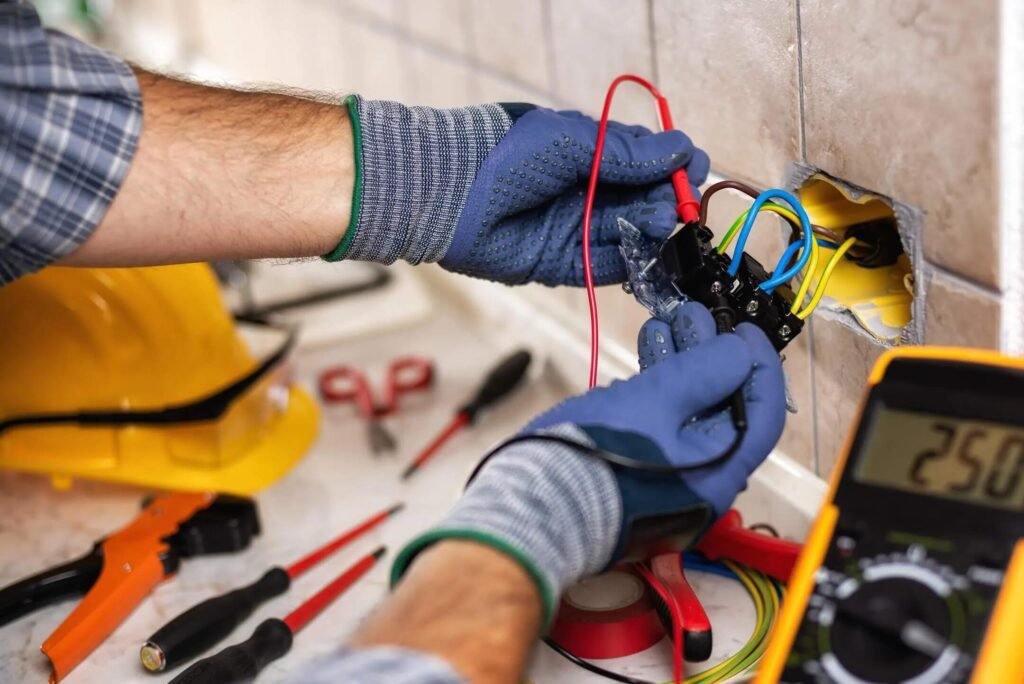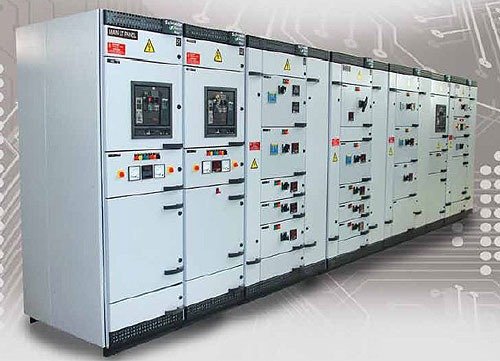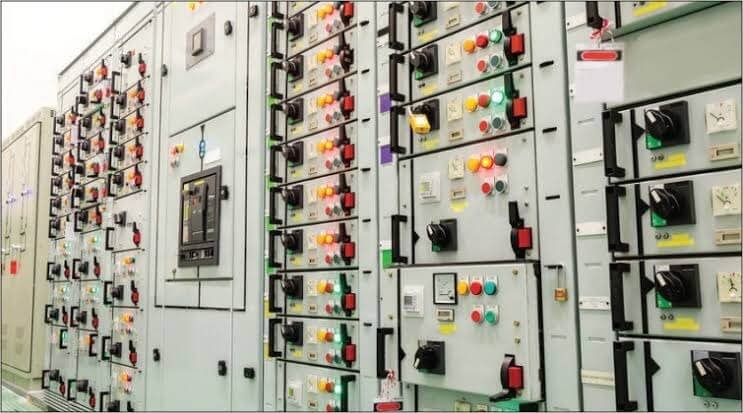Modern power systems rely on complex control and protection equipment that works behind the scenes to deliver power to industrial and commercial loads. Switchgear is the heart of these power distribution systems, combining switching devices, relays, instruments and control systems into one platform that manages power flow with precision and safety.
Switchgear today goes far beyond just switching. These systems have advanced protective algorithms, communication protocols and monitoring capabilities that turn basic power distribution into intelligent power management. Understanding the design principles and operational behaviour of modern switchgear is crucial for engineers designing robust electrical infrastructure that can meet today’s performance demands.
Regional power distribution challenges in developing electrical networks adds more stress to switchgear performance and reliability. Voltage fluctuations, harmonic distortion and system instability requires switchgear that can operate under adverse conditions and provide the protection and control functions for safe operation. This tough operating environment drives innovation in switchgear technology and influences the selection criteria for critical applications.
Understanding Electric Switchgear Fundamentals

The question “what is electrical switchgear” encompasses a broad range of electrical apparatus designed to control, protect, and isolate electrical equipment within power systems. At its core, switchgear combines switching devices such as circuit breakers or contactors with protective relays, measurement instruments, and control circuits integrated into standardized assemblies that provide complete power distribution functionality.
Traditional switchgear designs focused primarily on basic switching and protection functions using electromechanical devices and analog control systems. Modern electrical switchgear incorporates digital protective relays, microprocessor-based control systems, and communication interfaces that enable sophisticated power management strategies previously impossible to implement with conventional technology.
The evolution from basic switching equipment to intelligent electric switchgear platforms reflects broader trends in power system automation and smart grid development. Contemporary switchgear assemblies function as data collection points that provide real-time information about power system conditions, enabling proactive maintenance strategies and optimized system operation through advanced analytics and monitoring capabilities.
Classification and Voltage Ratings
Electric switchgear classification systems organize equipment based on voltage levels, installation methods, and application requirements. Low voltage switchgear is normally designed to operate with voltages upto 1000V and is used in distribution applications in industrial plants and commercial building. Medium voltage switchgear has a voltage between 1kV and 35kV and it serves the primary distribution and power distribution at industrial plants.
The switchgear definition electrical standards provides the construction requirements, test procedure and performance requirements that make them reliable to operate under variable operating conditions. These standards deal with aspects such as short-circuit withstand capacity, mechanical strength, environmental requirements and protection, as well as safety considerations that determine design and choice of switchgear.
The choice of installation environment has a considerable influence on switchgear requirements and configuration. Installations in buildings can be more compact and can be built using air insulation, whereas out-of-building installations need to be more weatherproofed and might be better implemented using a gas insulation design to ensure a better reliability and less maintenance needs.
Advanced Switchgear Technologies and Components
Modern electrical switchgear incorporates sophisticated technologies that enhance performance, reliability, and operational capabilities compared to conventional designs. Digital protective relays provide precise fault detection and system monitoring capabilities that enable coordinated protection schemes and reduce fault clearing times, minimizing equipment damage and system disturbances.
Communication protocols integrated within contemporary switchgear enable remote monitoring, control, and data collection capabilities that support advanced power system management strategies. These interfaces allow integration with supervisory control and data acquisition systems, enabling centralized monitoring of distributed switchgear installations and coordinated control responses to system disturbances.
Arc flash mitigation technologies represent critical safety advancements in modern electric switchgear design. These systems detect developing arc faults and implement rapid interruption strategies that minimize arc energy release and protect personnel from potentially fatal arc flash incidents. The implementation of these technologies requires careful coordination with existing protective devices and system grounding practices.
Circuit Breaker Technologies and Performance
Circuit breakers form the heart of most electrical switchgear assemblies, providing the switching and interruption capability necessary for normal operation and fault protection. Vacuum circuit breakers dominate medium voltage applications due to their excellent interruption performance, minimal maintenance requirements, and environmental advantages compared to older oil or gas-filled designs.
SF6 circuit breakers continue to serve high-voltage applications where superior interruption performance justifies their higher complexity and environmental considerations. However, industry trends favor alternative technologies including vacuum interrupters and solid insulation designs that eliminate greenhouse gas concerns while maintaining excellent electrical performance.
The selection between different circuit breaker technologies depends on application requirements including fault current levels, switching frequency, maintenance accessibility, and environmental considerations. Understanding these trade-offs enables informed decisions about switchgear specifications that optimize performance while minimizing lifecycle costs and environmental impact.
Protection and Control System Integration
Modern electric switchgear protection schemes extend far beyond simple overcurrent protection to incorporate comprehensive monitoring and diagnostic capabilities. Digital protective relays analyze multiple electrical parameters simultaneously, enabling sophisticated protection algorithms that provide selectivity, sensitivity, and speed characteristics impossible to achieve with conventional electromechanical devices.
Differential protection, directional overcurrent protection, and distance protection represent advanced protective functions commonly integrated within modern switchgear designs. These protection schemes require careful coordination and setting calculations to ensure optimal performance while maintaining proper selectivity between protective devices at different system levels.
Control system integration within electrical switchgear enables automated responses to system conditions and remote operation capabilities that improve both system reliability and operational efficiency. These systems can implement load shedding strategies, automatic transfer sequences, and coordinated startup procedures that optimize system performance while reducing operator workload.
Design Considerations and Engineering Challenges
Understanding “what is a switchgear electrical” system requires examining the complex engineering challenges involved in designing assemblies that meet demanding performance requirements while ensuring safe operation under all conditions. Short-circuit current calculations are used to calculate the mechanical and thermal stresses that switchgear components are exposed to during a fault, and this information is used to select the components and to define assembly design considerations.
The operation of protective devices in a proper sequence during fault conditions is guaranteed by the coordination studies, therefore reducing the magnitude of system disturbances to a minimum, and making sure that the fault is fully isolated. The studies involve careful analysis of the impedances of the system, contributions of fault currents and the characteristics of the protective devices in order to obtain the best coordination under all possible operating conditions.
Environmental considerations significantly influence electric switchgear design requirements, particularly in challenging climates where temperature extremes, humidity, and contamination levels can impact equipment performance and reliability. Correct selection of materials, design of the enclosure and installation procedures become vital considerations in achieving long term reliable operation.
Arc Flash Analysis and Safety Considerations

Arc flash hazard analysis has become mandatory for most industrial electrical installations, directly impacting electrical switchgear design and operation procedures. These studies calculate incident energy levels that personnel might experience during maintenance activities, influencing both equipment specifications and safety procedures required for safe operation.
Modern switchgear designs incorporate multiple features to reduce arc flash risks including rapid fault clearing systems, arc-resistant construction, and remote operation capabilities that minimize personnel exposure to potential hazards. However, these safety features require careful integration with existing protective systems and may influence switchgear selection and configuration decisions.
The economic impact of arc flash mitigation measures must be balanced against safety benefits and regulatory requirements. While advanced protection systems command premium pricing, the potential costs associated with arc flash incidents, including personnel injury, equipment damage, and business interruption, typically justify investments in enhanced safety features.
Maintenance Strategies and Reliability Optimization
Developing effective maintenance strategies for electric switchgear requires understanding both component characteristics and system operating conditions. Preventive maintenance programs must balance the need for reliable operation against the costs and risks associated with maintenance activities, particularly in systems where shutdowns impact critical processes.
Condition-based maintenance techniques utilizing online monitoring systems enable more targeted maintenance activities that focus resources on components showing signs of degradation rather than following rigid time-based schedules. These approaches can reduce maintenance costs while improving system reliability through early detection of developing problems.
Predictive maintenance strategies incorporate data analytics and trending analysis to identify patterns that indicate potential equipment problems before they result in failures. These techniques require sophisticated monitoring systems and analysis capabilities but can provide significant improvements in both reliability and maintenance cost effectiveness.
Implementation and Installation Best Practices
Successful electrical switchgear installation requires careful planning that addresses site conditions, access requirements, and integration with existing electrical systems. Site preparation must provide adequate foundations, environmental protection, and clearances for both normal operation and maintenance activities. These requirements often influence building design and may require coordination between multiple engineering disciplines.
Cable routing and connection design significantly impact both initial installation costs and long-term maintenance requirements. Proper planning can minimize cable lengths, reduce installation complexity, and provide adequate access for future modifications or repairs. These considerations become particularly important in retrofit applications where existing infrastructure may limit available options.
Testing and commissioning procedures verify that installed electric switchgear meets specification requirements and operates correctly under all anticipated conditions. These procedures include component testing, protection system verification, and integration testing that confirms proper coordination with other system components. Comprehensive testing documentation provides essential references for future maintenance and troubleshooting activities.
System Integration and Communication Networks
Modern electrical switchgear installations increasingly rely on communication networks that enable centralized monitoring, remote operation, and data collection capabilities. These networks require careful design to ensure reliability, security, and adequate bandwidth for all connected devices while maintaining compatibility with existing facility infrastructure.
Cybersecurity considerations have become critical factors in switchgear communication system design as these networks become potential targets for malicious attacks that could disrupt power system operation. Proper network design must implement multiple layers of security while maintaining the operational functionality required for effective power system management.
Protocol selection and network architecture decisions significantly impact both initial implementation costs and long-term system expandability. Standardized protocols and open architecture designs provide flexibility for future system modifications and equipment additions, while proprietary systems may offer enhanced functionality at the cost of reduced flexibility.
Future Trends and Technology Evolution
The evolution of electric switchgear technology continues advancing through improvements in materials, control systems, and integration capabilities. Solid insulation technologies promise to eliminate many of the environmental and maintenance concerns associated with traditional insulation methods while maintaining excellent electrical performance characteristics.
Digital transformation initiatives within the power industry drive demand for switchgear with enhanced communication capabilities, advanced analytics, and integration with enterprise-level management systems. These capabilities enable more sophisticated power management strategies and support predictive maintenance programs that can significantly improve system reliability and reduce operating costs.
Renewable energy integration requirements influence switchgear design specifications as power systems must accommodate bidirectional power flows, variable generation patterns, and grid stability challenges associated with distributed energy resources. These applications require switchgear capabilities that exceed traditional design requirements and may drive development of new technologies and protection strategies.
Conclusion

The modern electric switchgear features in today’s designs are the backbone of reliable power distribution in industrial and commercial applications. These systems provide the control, protection and monitoring functions for safe and efficient power distribution and support the advanced automation and communication requirements of modern power systems. Understanding the technical capabilities and implementation considerations of modern switchgear technology will help you make informed decisions on your electrical infrastructure investments.
The integration of digital technologies in electrical switchgear platforms turns traditional switching equipment into intelligent power management systems with monitoring, diagnostic and optimisation capabilities. As industrial and commercial facilities become more dependent on reliable power, the advanced functionality of switchgear systems is critical for critical power distribution applications.
IET has over 75 years of electrical engineering expertise to deliver switchgear solutions across East Africa’s diverse industrial landscape. Our experience with MV switchgear and transformers and deep understanding of regional power infrastructure challenges allows us to specify and implement electric switchgear systems that work reliably in Kenya, Uganda and Tanzania. With local manufacturing capabilities, testing facilities and engineering teams throughout the region, IET has the technical expertise and local support to ensure your critical electrical distribution investments perform optimally. Talk to our switchgear experts today to see how advanced electrical distribution technology can improve your facility’s power reliability and operational efficiency.

Leave a Reply